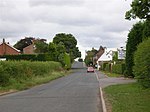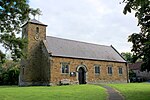St Mary's Church, Birdforth
12th-century church buildings in EnglandChurches preserved by the Churches Conservation TrustGrade II listed churches in North YorkshireUse British English from January 2023

St Mary's Church, or Birdforth Old Chapel, is a former Anglican church in the village of Birdforth, North Yorkshire, England. It is recorded in the National Heritage List for England as a designated Grade II listed building, and is under the care of the Churches Conservation Trust.
Excerpt from the Wikipedia article St Mary's Church, Birdforth (License: CC BY-SA 3.0, Authors, Images).St Mary's Church, Birdforth
York Road,
Geographical coordinates (GPS) Address Nearby Places Show on map
Geographical coordinates (GPS)
| Latitude | Longitude |
|---|---|
| N 54.1756 ° | E -1.2565 ° |
Address
York Road
YO61 4NW
England, United Kingdom
Open on Google Maps











